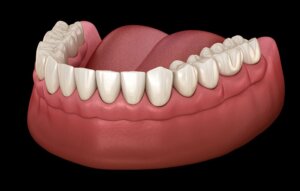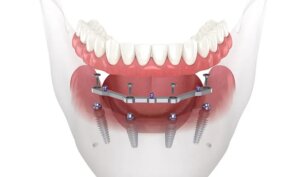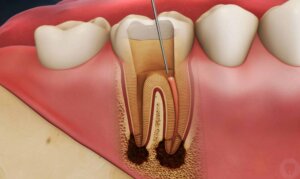
The smile we possess is one of our greatest assets. A smile in the right place at the right time can help us get the job we want, improve our interactions with loved ones, and, why not, even make us more attractive to new people. A beautiful smile is worth 1,000 words, but unfortunately, healthy teeth have become a distant dream for many Americans. And this is mainly due to our high-sugar diets and hectic lifestyles.
Compared to our parents and grandparents, the nutrition we enjoy is increasingly laden with sugar and processed components, which negatively affect our dental health in the long run. Moreover, many of us lead pretty hectic lives and work long hours at our jobs, which can make us temporarily ignore good dental hygiene. What does this mean? An accelerating increase in the number of cavities found in the mouth of the average American citizen. But no matter what stage you’re at, there are solutions. So, in the following article, we’ll outline the advantages of calling an NYC endodontist and list some of the treatments they specialize in.
Why Not a Regular Dentist?
Dentists are medical professionals who must attend at least four years of dental school before they are allowed to practice in the field. In addition to these four years of general training, endodontists undergo another two years of intense specialization, during which they focus on managing and preventing diseases affecting the nerves and dental pulp. An endodontist is a dentist you turn to when faced with a troublesome cavity that needs professional help or when your teeth have been injured in an unfortunate event, and you need help to prevent losing them.
Every year, at least two million Americans show up in hospital emergency rooms with severe dental pain. And a good percentage of them are then treated by endodontists. As a highly densely populated state with many options to choose from, NYC endodontists are considered some of the best in the world, and the equipment they have at their disposal is some of the most advanced in North America. Furthermore, NYC specialists perform some of the most complex dental operations for dental pulp issues. But what are these procedures?
From Simple to Complex Operations
If we are to guess, you associate the services of an NYC endodontist with root canal therapies, which are recommended when your dental pulp has been severely damaged by a cavity that has gone untreated for a long time. And you’d be right; root canal therapies are the most common procedures performed in endodontists’ offices and have become a routine for many Americans experiencing dental problems. But this doesn’t mean they are the only treatments endodontists can perform.
Your local dentist cannot always identify the cause of your dental pain. Therefore, he may recommend that you seek the services of an endodontist. Endodontists specialize in identifying and treating dental pain and are equipped with tools and gadgets not usually available in regular dental clinics. Furthermore, an NYC endodontist may be able to identify problems with your teeth that require professional treatment not available to a regular dentist. While dentists may be considered the general practitioners of the dental world, endodontists are the specialists to whom you are referred when you have a problem that requires complex treatments.
Compared to the 159,000 dentists engaged in general practice in the US, endodontists are far outnumbered, and their services are highly concentrated on a few select issues. Generally, endodontists only deal with problems affecting the dental pulp and nerves. They are experts in apicoectomies or root canal operations, which aim to save severely decayed teeth. Endodontists can provide appropriate medication for severe dental infections, and their expertise acts as a last resort for people at risk of losing their teeth. But we mentioned earlier that endodontists use tools unavailable to regular dentists. So, what are these tools?
From Lasers to the Latest Imaging Technologies
Endodontists have access to some of the most advanced imaging tools available on the North American market. Suppose you suffer from a persistent cavity that does not appear correctly on a regular X-ray. In that case, your endodontist may use digital radiography or cone beam computed tomography to discover the true extent of your pulp damage. And if your doctor needs a closer approach, they might use specialized microscopes to show the potential harm of your dental pulp in real-time.
If surgical intervention is needed, the specialist you call could use surgical microscopes, ultra-precise lasers, and ultrasonic instruments to remove the affected dental pulp, all without significantly affecting the tooth’s enamel layer. Endodontists also have access to N-trailing Intraligamentary syringes, titanium excavators, Peeso Ramers, and various endodontic burs, which can make the difference between a lost tooth and one with real prospects of recovery.
Pain is a Thing of the Past
When we think of dental procedures, most of us still think of the massive pain we experienced as children when we had to receive treatment for tooth decay. But dental treatments have progressed enormously over the last few decades, and in 2023, dental interventions are routine procedures that no longer mean moments of pain and discomfort. Your smile is one of your greatest assets, a tool you can use personally and professionally, so it is necessary to take all measures to preserve it for as long as possible.
Whether talking about a root canal needed because of untreated decay or a tooth repositioning performed by an NYC endodontist, dentistry in the United States has been a landmark in recent years and nowadays is at the forefront of innovation in the medical field. From using 3D printing for building inexpensive and durable dental fillings to utilizing stem cells for reconstructing damaged dental pulp, advances in recent years in dental medicine have been substantial. The following decades look exciting for people interested in preserving their beautiful smiles, and the constant innovation in dental treatment makes it possible to reverse the effects of our less-than- ideals diets.








